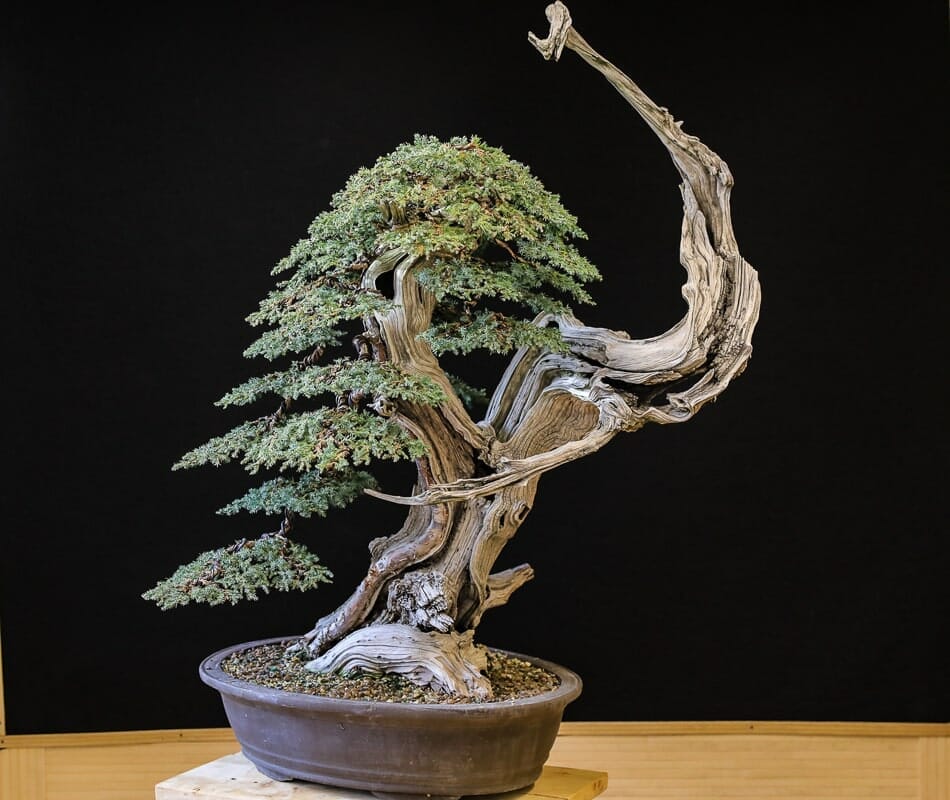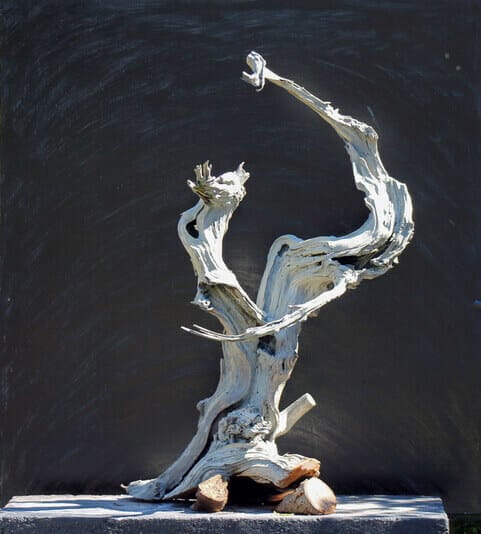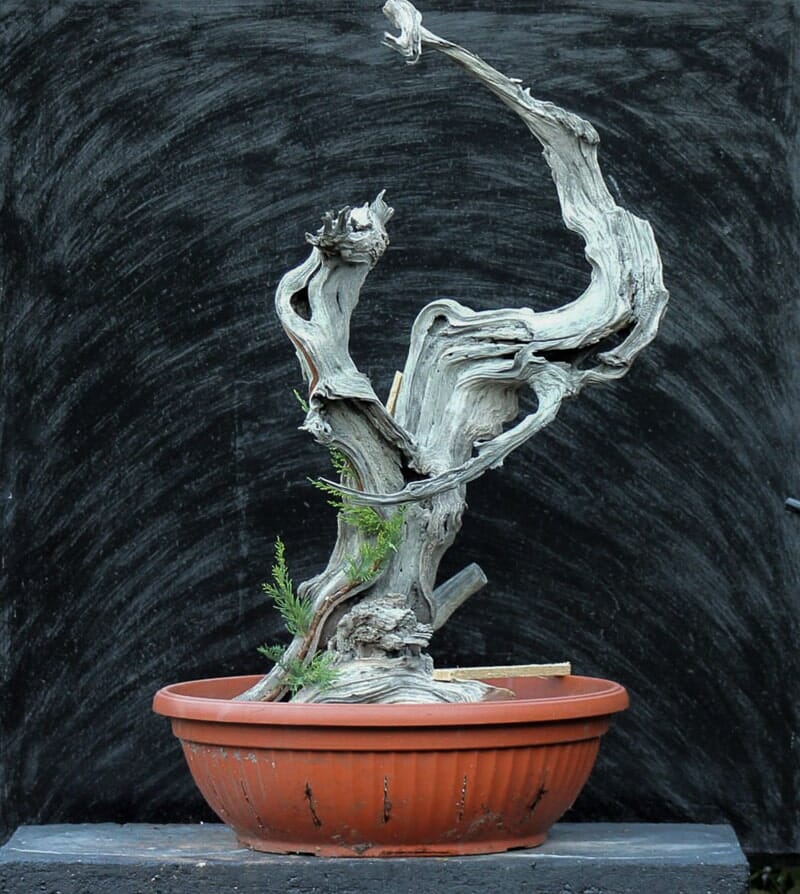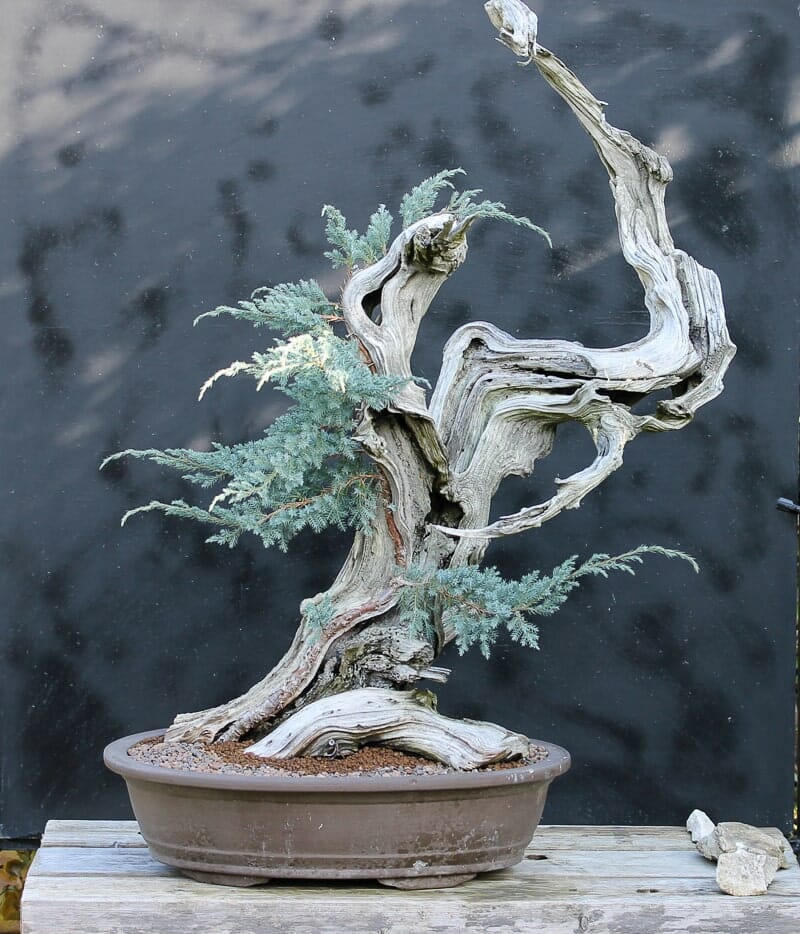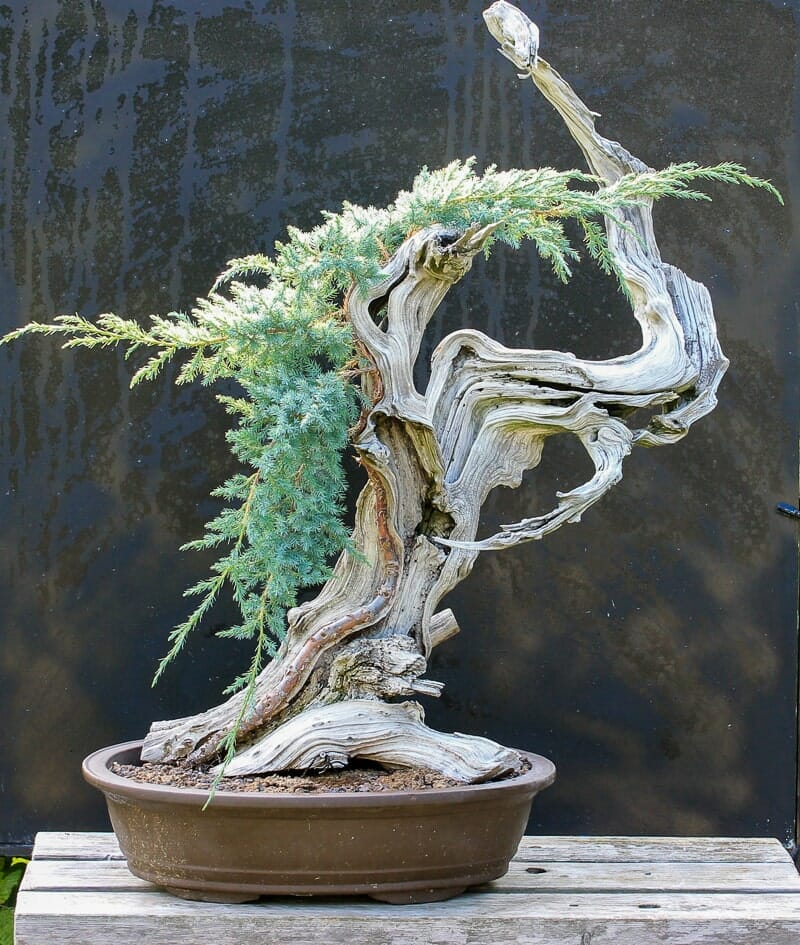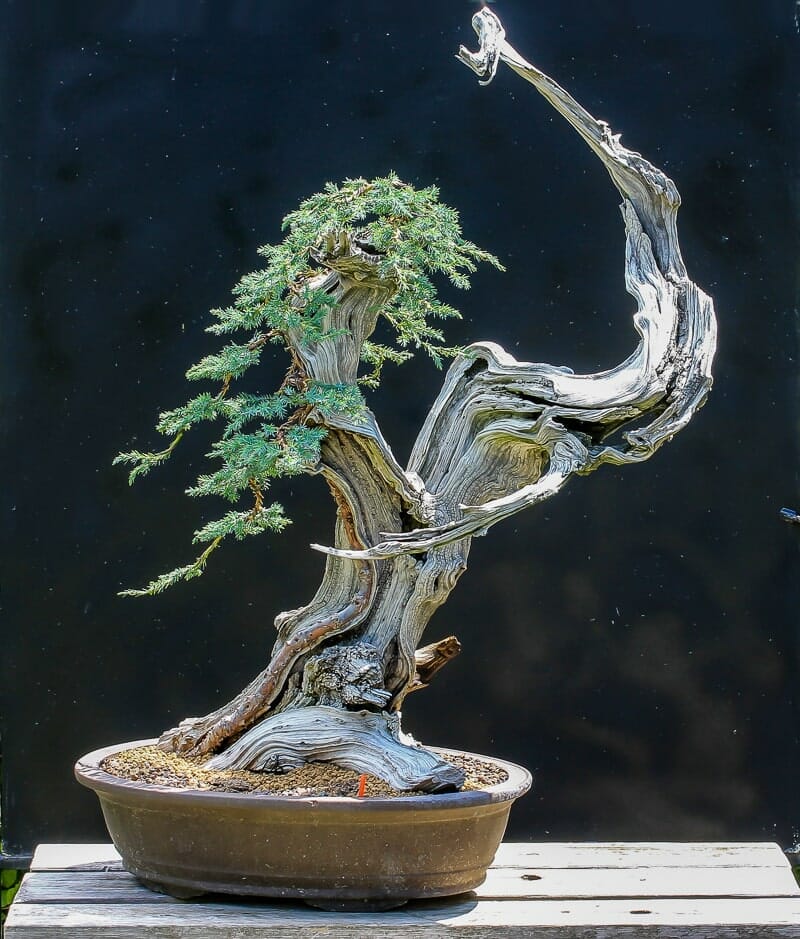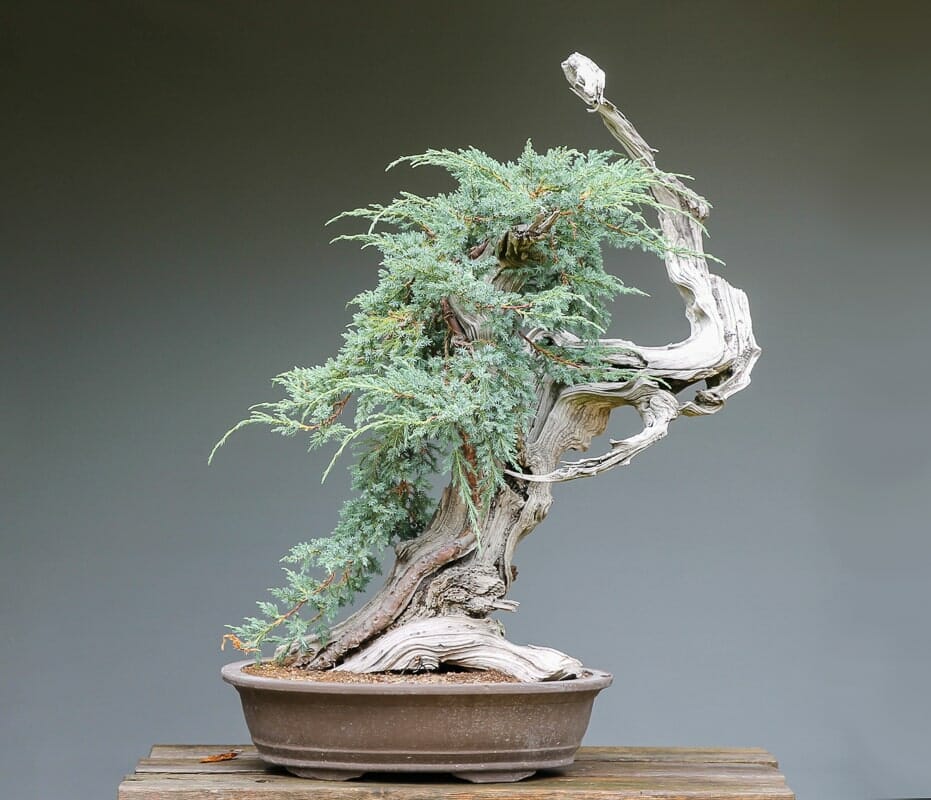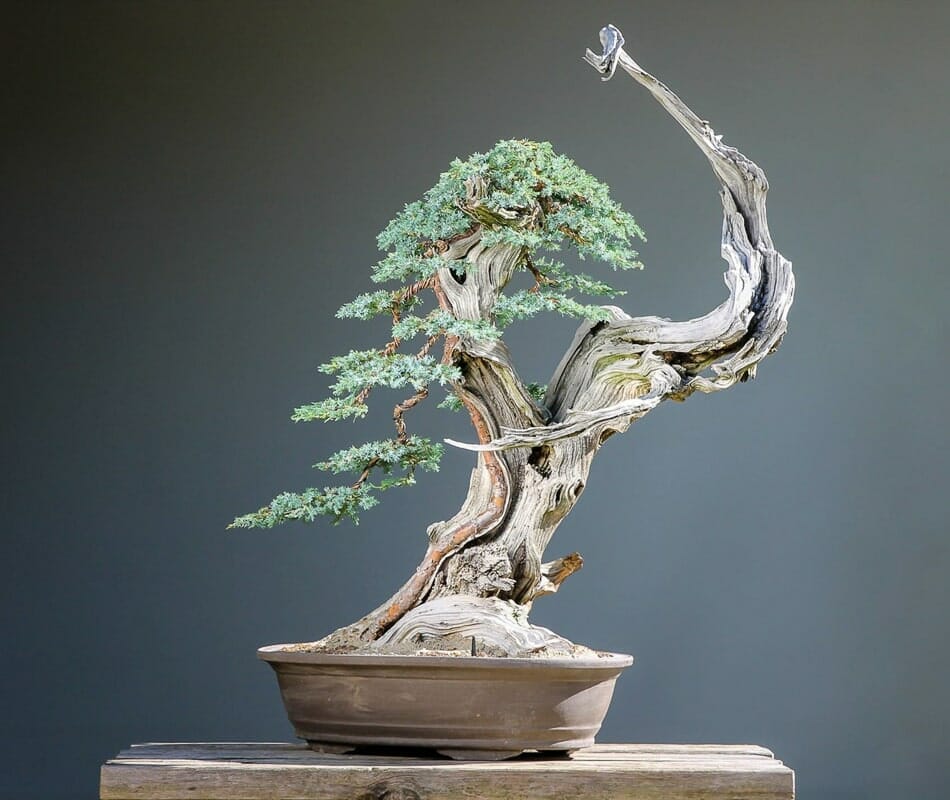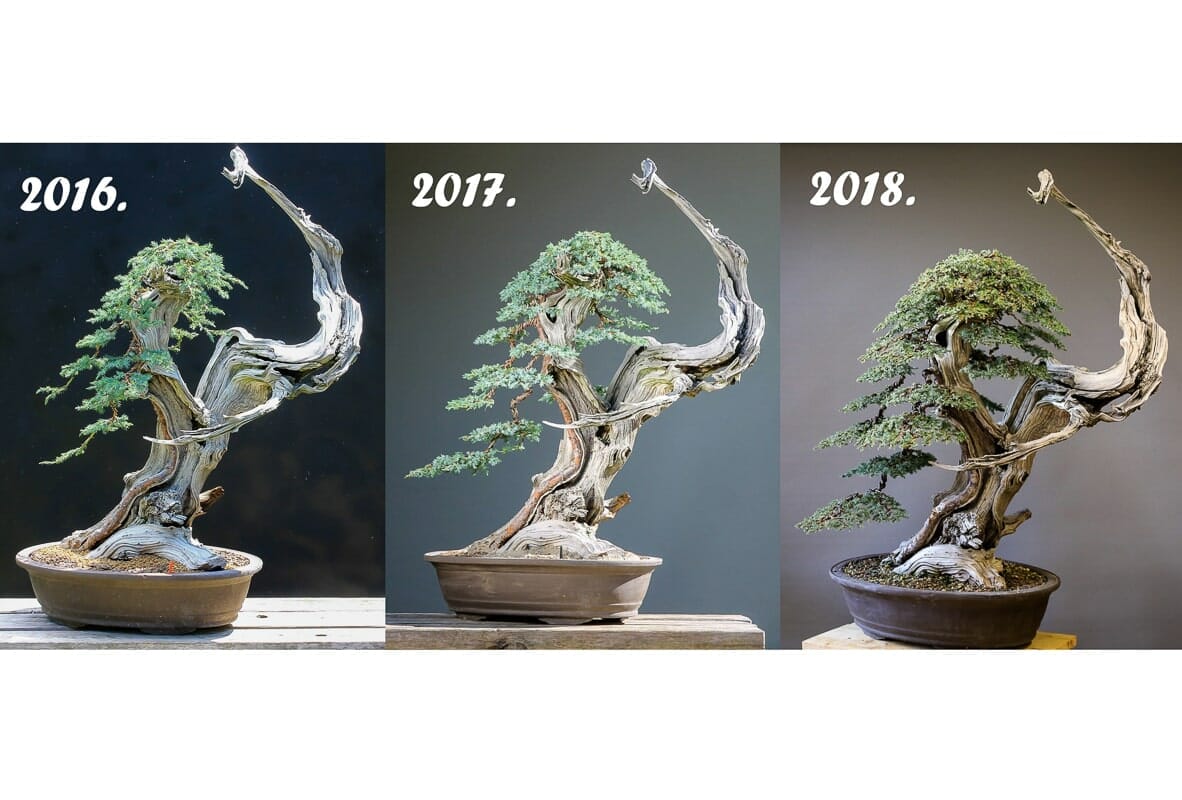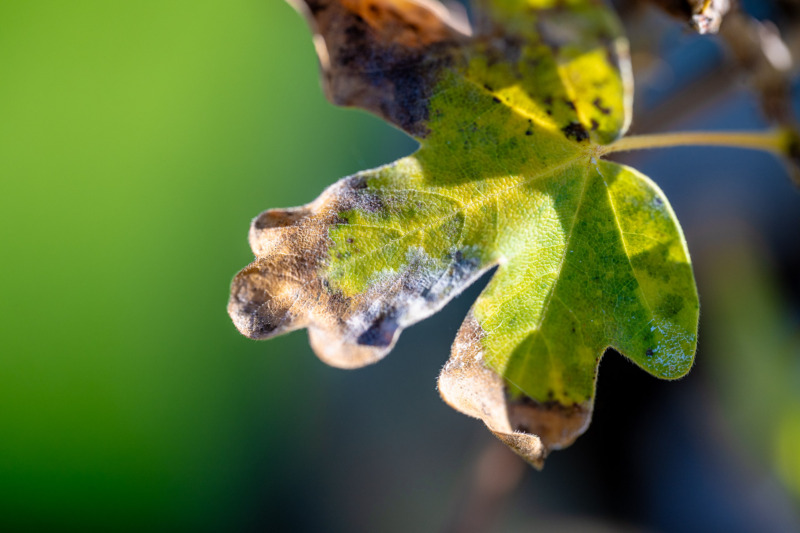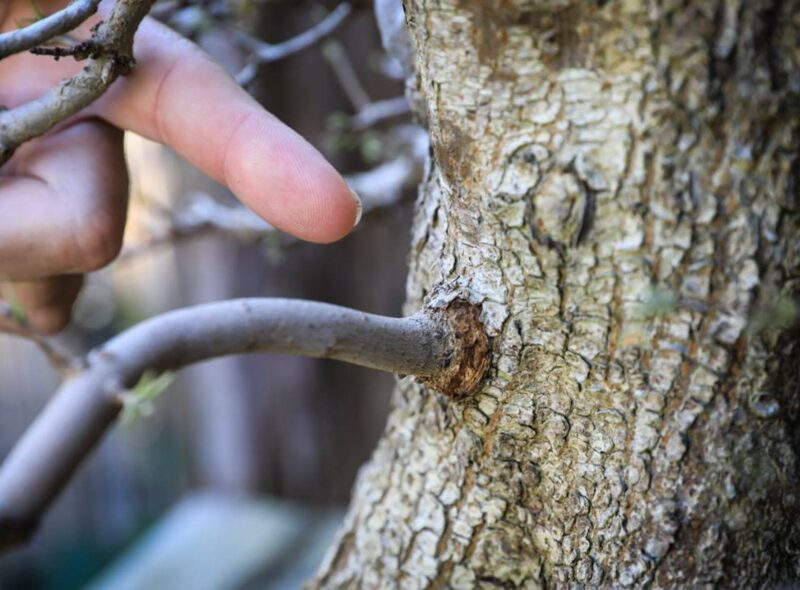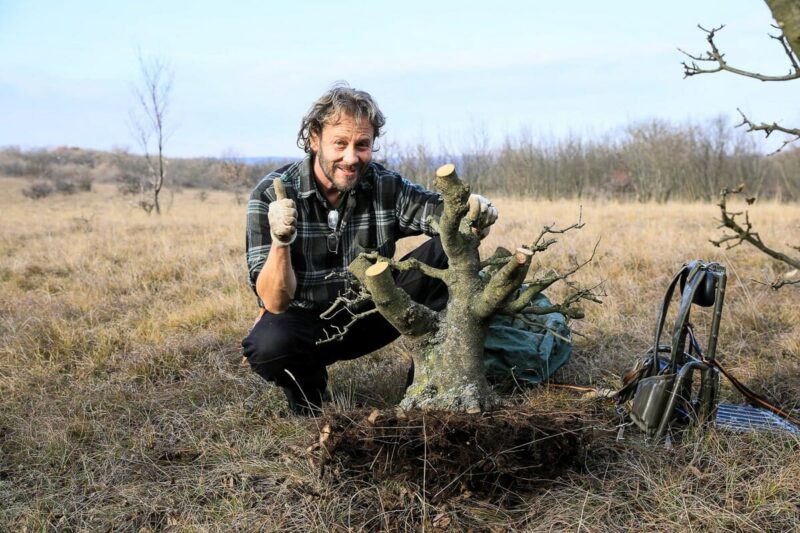You could grow such a juniper from a cutting or a small tree, but that would take an enormous amount of time. Tanuki is an interesting alternative. These impressive and dead woody plants are ideal for "marrying" with a living plant. The first results can be seen after just five to six years. Although some plant designers do not appreciate this method due to the unconventional stem shape, this method is traditionally Japanese. The secret lies in the right technique. If this is lacking, the result can be anything but appealing, just as it would be with an incorrectly shaped deciduous tree. With the right technique, it is no longer possible to tell whether it is a tanuki or not. Parts of juniper varieties and yew are ideal as living parts. Other evergreen varieties are much more difficult to use. Our example shows how to build a foliage structure on the dead wood. We have used the Himalayan juniper "Blue Swed" (Juniperus sqamata) for the living part and cornelian cherry for the dead wood.

